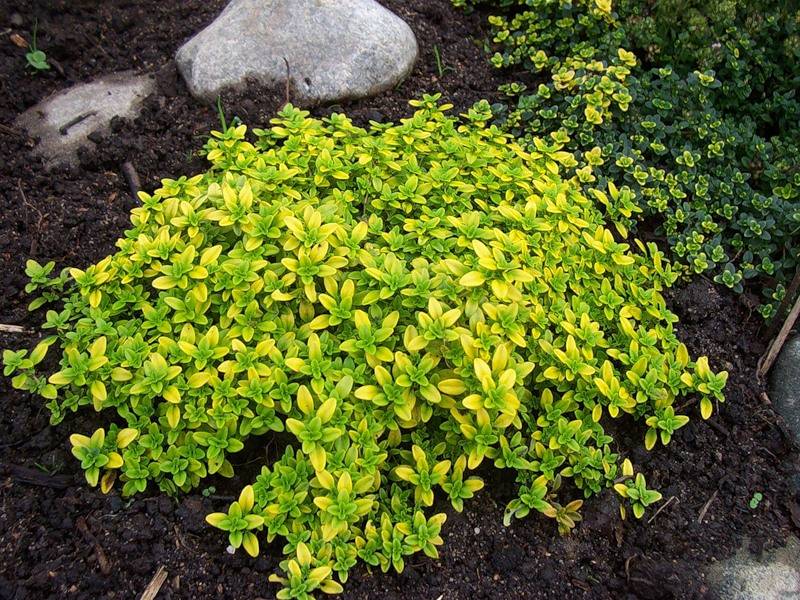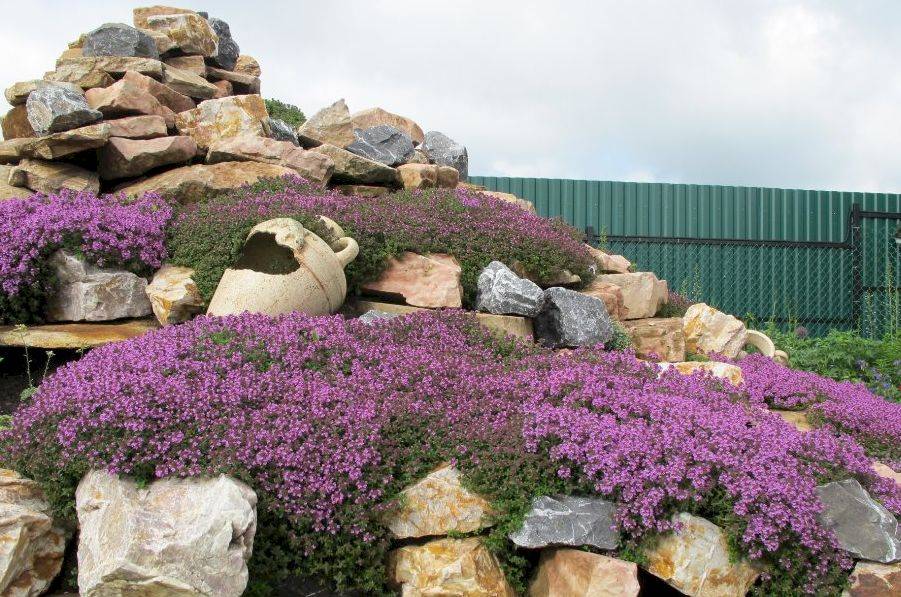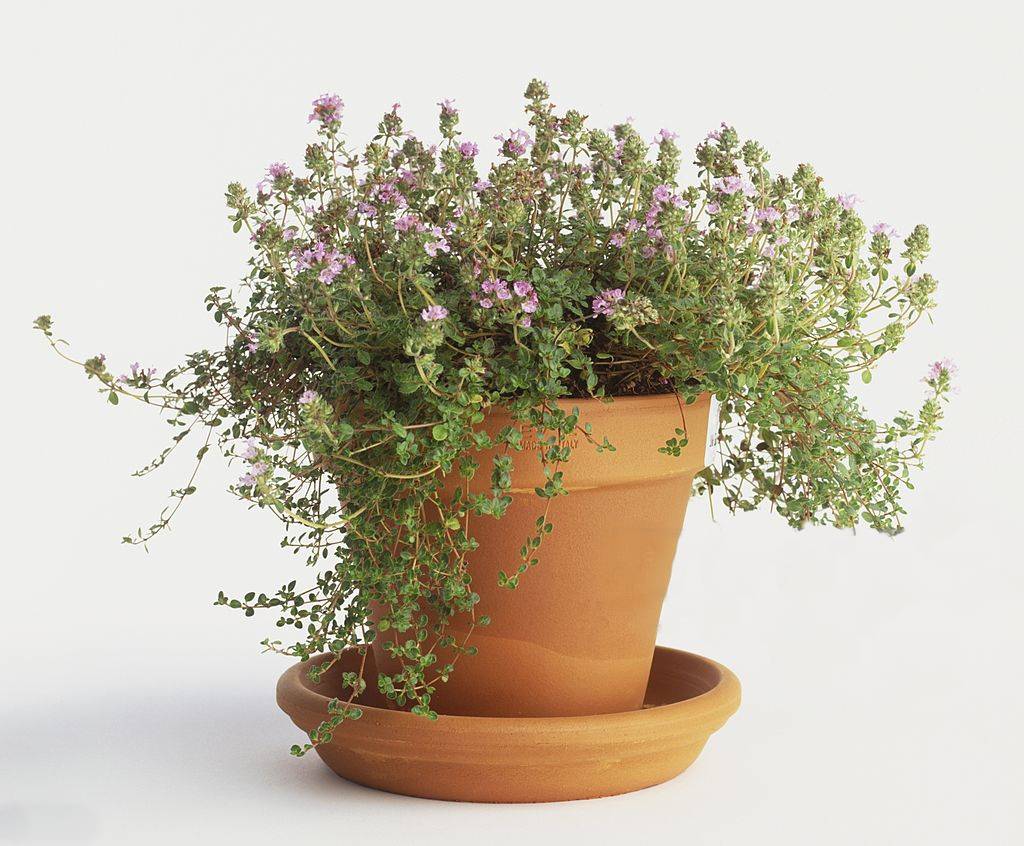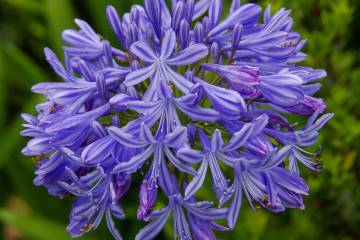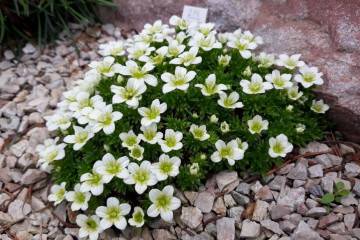Lemon thyme - planting and care in a pot
Content:
How to grow lemon thyme at home, many do not know. But it has its own characteristics of care and breeding methods at home and in the open field. What types and varieties are the most popular, where this crop is used, and how to deal with diseases and pests, is described below.
Description of culture
Lemon thyme, lemon-scented thyme (Aureus citriodorus, Lemon variegata) or lemon thyme are all names of one plant. The herbaceous shrub belongs to the Lamb family.
It has a pleasant aroma and contains phenolic compounds. Has roundish variegated yellow-green leaves. Distributed almost throughout the Eurasian continent, found in North Africa and Greenland.
Application
Thyme (or aureus) has many beneficial properties. It is used as a culinary herb. It goes well with meat, cottage cheese and cheeses, improves digestion. Combined with pepper, the aroma of thyme is enhanced.
For medical purposes, it is used to treat diseases of the respiratory tract and diseases of the joints. Thyme has bactericidal and anti-inflammatory properties. Compresses are made of it, infusions for gargling, and brewed like tea for colds.
Due to the original aroma, it is used in the perfumery industry in the manufacture of perfumes. It is also good for landscaping adjoining and park areas, the territory of kindergartens and other educational institutions, creating alpine slides.
Popular varieties
Among florists, the following are very popular:
- Donna Varley is a low-growing variety of thyme that grows only up to 10 cm. The variety has small lilac flowers and very small leaves 0.5 cm in size;
- Silver Queen (Silver queen) grows up to 15 cm, and during flowering up to 30 cm, has pale pink flowers. In width it can grow up to 85 cm;
- Gold Duaraf is ideal for alpine slides;
- Bertram Anderson has a particularly strong lemon scent.
Thyme care
Since thyme can be grown both on the site and at home, it needs different care.
Potted thyme: home care
Growing thyme at home will not be difficult, since it is an unpretentious plant. Likes well-lit places, not picky about air humidity, drought-resistant. Grows well on windowsills on the south side of the house. Loses its aroma in low light conditions. Watering should be done as the topsoil dries up.It grows well in a mixture of peat, turf and sand, does not need additional fertilizers.
Add humus before planting in a pot. With the onset of autumn, spraying is stopped and the amount of watering is reduced. It is advisable to move the thyme pot to a room with a lower temperature. For example, on a glazed balcony or terrace, where the temperature does not drop below 5 ° C.
In the open field
If the culture is grown in open ground, then for the winter it must be well covered in order to avoid freezing.
In order to provide the roots with oxygen, it is necessary to loosen the soil after each watering.
Periodically, the shrub needs to be pruned to give it a more lush shape. This should be done 2 times a year: in early spring and after flowering, leaving about a third of the stem.
Bloom
Lemon thyme is a low-growing shrub that reaches a height of 15-25 cm and up to 80 cm in width (spreading forms). Peduncles can stretch up to 30 cm. It blooms with small, abundant flowers, collected in several pieces in spike-type inflorescences. Each individual flower is shaped like a bell. Available in pink, purple or white. Flowering time is from June to August. Pollinated by insects, mainly bees. At the end, fruit boxes with seeds are formed.
Reproduction and planting of lemon-scented thyme and subsequent care for it
Thyme can be propagated both by seeds and vegetatively - by cuttings or simple division into several parts of the bush.
Vegetative way
When propagating by cuttings, a piece of the stem about 5 cm long is cut off from the stem and simply dropped into the ground. When dividing, it is necessary to dig out the bush and carefully divide it into the required number of parts, being careful not to damage the root system. Each part must be planted in a pre-prepared hole. This must be done before flowering begins, around the end of May or the beginning of June.
Seed propagation
For propagation by seeds in open ground or a greenhouse, it is necessary to prepare the soil at the beginning of March: dig it to a depth of 30 cm, loosen it and apply urea as fertilizer. Make longitudinal shallow furrows (up to 2 mm deep) at a distance of 40 cm from each other and sow. Since thyme seeds are very small, do not cover them with too much soil, 1 cm will be enough. It is better to cover them not with earth, but with river sand.
Cover the top of the bed with plastic wrap to speed up the germination process. It usually takes up to 4 weeks to wait for the first shoots.
You can also grow seedlings at home in planting containers. To do this, prepare the soil from a mixture of peat and humus in a 1: 1 ratio; drainage must be placed on the bottom of the container in order to prevent stagnation of water. Planting seeds of lemon thyme is carried out in shallow furrows, lightly sprinkled on top with earth or sand. The containers are covered with glass or cellophane. When the first shoots appear, the covering material must be removed.
It is necessary to regularly remove weeds and water, trying not to overmoisten the soil, otherwise the root system can rot.In mid-April, seedlings can be planted in open ground in a previously prepared place. The distance between the bushes should be about 10-13 cm.
After picking, the plant must be looked after in a certain way: make sure that the soil does not become waterlogged; water in moderation, and in rainy times, stop watering altogether. It is imperative to loosen the soil to provide oxygen access to the roots, and remove weeds, as they can drown out young seedlings. In the process of growth, it is necessary to carry out regular pruning, as well as remove dried inflorescences.
Important!It is not recommended to grow thyme in one place for more than 5 years.
Growing thyme and rosemary on a windowsill
To keep aromatic spices like thyme and rosemary close at hand, you can grow them in a pot at home. Even greens bought at the nearest supermarket are perfect for this. Before planting, it is necessary to remove the leaves from the bottom of the shoot, cut it obliquely and put it in water at room temperature for several hours.
Pour up to half of the soil into the planting pots, and pour sand on top. For the purpose of disinfection, pour a solution of potassium permanganate. Now you can plant the cuttings. They should be planted in several pieces in one container, and covered with a glass or plastic container on top. The container must be opened periodically so that the seedlings do not suffocate. You can completely remove it after 3 weeks, when the plants take root. After a while, plant in different pots. If necessary (if there is no time or opportunity to plant in the soil right away), you can wait until the plants give roots while in the water, and only then transplant them.
Problems with growing thyme
Thyme is a plant that is quite resistant to attacks by pests and diseases, but can be attacked by aphids, garden moths and weevils. It is worth paying attention to the appearance of garden ants on the site, since it is they who breed the so-called aphid farms. Fertilizers with the addition of lime will help get rid of moths and weevils. Excessive watering can contribute to the development of various fungal diseases. Fungicides will save them from them.
Thus, lemon-smelling thyme, or thyme, is an unpretentious perennial plant that can be grown both in the open field and at home on a windowsill. It has a pleasant scent. Growing it will provide the hostess with a constant supply of aromatic spices that can be used to prepare various dishes and marinades.
